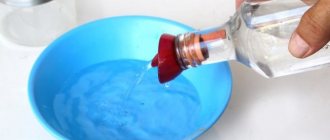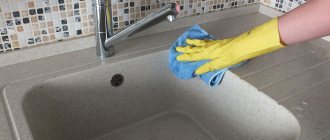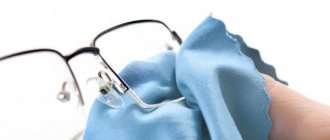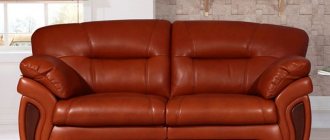Among the types of ceiling design that are widely used today during apartment renovations, stretch ceilings are of greatest interest. Despite all the relatively complex and labor-intensive installation technology, this design option for ceiling surfaces is the most original. Thanks to the wide variety of colors and textures, such stretch ceilings can radically change the interior of even the most ordinary-looking room. Sophistication, gloss and presentability are the main qualities that are characteristic of this type of ceiling design.
However, it is not enough to install a tension suspension structure. It is important to know how to clean stretched fabric. This requires regular maintenance of stretch ceilings so that they continue to please you for years to come.
What is the secret to caring for such attractive and delicate structures? When should you wash, what and what detergents are best for hanging tensioned systems? Let's try to answer these questions.
How often do suspended ceilings require cleaning?
The frequency depends on the conditions in the room. For example, in living rooms whose windows do not face the highway, once a year is enough. In the kitchen, linens get more dirty: splashes of grease and water, and sometimes even soot, settle. And in the bathroom, condensation forms on the ceiling due to high humidity. Here cleaning will be required more often (at least 2-4 times a year).
Children's rooms have special requirements for cleanliness. In addition, kids can stain the ceiling with felt-tip pens, plasticine or paints if they have access to it (for example, from a loft bed or sports complex). This is where you have to clean most often (up to once a month).
Important! If stains appear on the surface, there is no need to wait for scheduled cleaning. It is much easier to remove dirt immediately.
High-quality branded ceilings are treated with compounds that repel dust and dirt. Cheap linens don’t have this and they get dirty faster. Let us consider in detail the rules for caring for film and fabric canvases.
Care of stretch ceilings made of PVC film
Some nuances depend on the texture: glossy, matte or satin.
Glossy
Glossy PVC film has an absolutely smooth surface, so it is easy to care for, but due to the mirror effect, streaks are very visible. For cleaning you will need a soft cloth or foam sponge, detergent and a stepladder. They use both special formulations and ordinary household ones that do not contain solvents or abrasives.
The ceiling is wiped starting from the corner. In multi-tiered structures, each segment is processed separately. It is also convenient to divide the canvases in spacious rooms into parts and process them one by one.
In high rooms, you can use a microfiber mop. But you need to act very carefully and not press too hard. Otherwise, the film may tear, touching uneven surfaces on the ceiling.
If old marks remain, apply a cleaning composition to them and leave for 5-10 minutes. Then the stain is washed off and the fabric is washed clean.
To ensure that no streaks remain on the surface, glossy stretch ceilings are additionally treated after washing. They use compositions for cleaning glass and mirrors, for example, “Mr. Muscle”. Ammonia with water (in a ratio of 1:10) helps at home. At the end of cleaning, wipe the ceiling with a dry cloth.
Matte
Unlike gloss, the matte texture is not smooth, therefore it does not reflect light, and the surface resembles a painted ceiling. Dust is less noticeable and there are no streaks left. Therefore, caring for a matte stretch ceiling is easier than caring for a varnished one.
To avoid rubbing small particles of dirt into the surface, brush off the dust before wet cleaning. Then they wash it in the same way as gloss. But choose products for matte ceilings that do not contain alcohol. For household chemicals, soap solution and dish soap (like Feri or Prila) are suitable.
Stains on the matte ceiling surface are not visible, and therefore no additional processing is required. This makes maintenance easier. But due to the grainy texture, heavy stains are more difficult to remove.
Satin
The canvas looks like fabric. Satin PVC film has a fine-grained texture and semi-matte surface. Satin gently diffuses light and does not have a mirror effect, so it washes without streaks. Since the canvas is not perfectly smooth, dust, grease and other contaminants accumulate in the texture, which it is advisable to wipe with a soft cloth before starting cleaning.
Read more: Pros and cons of satin stretch ceilings
For satin ceilings, the same products are used as for smooth ones. You can add a couple of tablespoons of ammonia to soapy water or dishwashing liquid.
Tips from professionals: what to do if the ceiling has lost its color and shine?
- The washing powder solution can be used to wash the gloss after it has completely dissolved. The foam is washed off with clean water, and the fabric is wiped with a soft rag. There should be no streaks after cleaning.
- When vacuuming, if there is no nozzle without bristles, you can use a microfiber cloth attached to the brush. Cleaning is performed at low power.
- PVC fabric is afraid of low temperatures, it becomes fragile. In a room with a suspended ceiling, sudden temperature changes should not be allowed, so long-term ventilation is prohibited.
- Before starting work, make sure that the napkin does not leave fibers on the canvas and does not stain the surface.
- The installation of lighting and heating equipment should be carried out according to calculation; too many lamps or registers can lead to overheating and melting of the canvas.
- Where tension fabrics are installed, it is not recommended to open bottles of champagne or other sparkling wine - an accidentally ejected cork can permanently damage the ceiling.
- A suspended ceiling can save furniture and wall decoration from flooding by neighbors from the floor above. PVC films and fabrics can withstand up to 100 l/m2 of water, sagging under this weight without breaking. To pump out the liquid, you will have to call a special service, since you won’t be able to do it yourself.
- To restore shine to a panel that has lost its shine, it is enough to use a piece of suede.
Dirt that can't be cleaned
There are several types of contaminants that cannot be cleaned by any methods or means:
- stains and marks from ink, markers, paints that have penetrated into the structure of the film;
- damage from sparks from sparklers, matches;
- resinous components of tobacco smoke penetrating into the fibers of the material;
- discolored spots as a result of exposure to aggressive environments;
- traces of chewing gum, tape, plasticine.
If there are such stains, you will have to call the craftsmen and completely redo the ceiling.
Care of fabric stretch ceilings
Such canvases require delicate handling. Caring for fabric ceilings is more difficult, since the surface has a relief texture due to the interweaving of threads. In addition, the material is not so resistant to moisture. It is advisable to limit yourself to dry cleaning: periodically brush off the dust with a soft brush. They also use a vacuum cleaner, holding the nozzle a couple of centimeters from the ceiling.
Only stains are removed. Apply the product to the stain, wait a few minutes and carefully remove. In addition to professional compositions, they use:
- dish gel - from greasy marks;
- ammonia - for stains from ketchup and tomato paste, or in a 1:1 ratio with soap solution will help cope with yellowness after leaks;
- a damp cloth will remove traces of markers or water-based paint;
- alcohol or vodka will work with a permanent marker.
A foam cleaner for car interiors is a good way to get rid of dirt on a fabric ceiling. Apply the product to the stain, wait about 3 minutes (the required time is indicated on the label), then wipe with a dry, clean cloth.
For the most difficult stains, you have to use a solvent. Take “647”, which does not contain acetone, and use a cotton swab or disk to apply it a little pointwise onto the stain. After some time, they clean and wipe the ceiling.
If the stains cannot be washed out, the last resort is to dye the fabric. To hide dirt, choose a shade darker than the previous color. Use water-based formulations.
Read more: How to paint a suspended ceiling
How to wash without streaks
Experience shows that soap often leaves unsightly marks. Surfaces with colorful patterns are not susceptible to stains. If the glossy canvas is plain white or black, then you need to make sure that no unwanted marks remain after your cleaning.
Alcohol-containing products do an excellent job of this task. The main thing is to never clean with a damp cloth. Use only dry cloth or foam.
Tip: to avoid streaks, wipe the ceiling not in a circular motion, but from left to right or parallel to the ceiling seam.
Features of caring for ceilings in the kitchen and bathroom
During the operation of these premises, a special microclimate is formed. Due to increased humidity, condensation appears. And in the kitchen, while cooking, small splashes of fat fall on the ceiling and freeze. Problems like these make cleaning more difficult.
In the bathroom, especially with poor ventilation, many traces of drops and drips form. They can be easily removed using glass cleaning sprays. You can add a couple of tablespoons of ammonia to your regular detergent.
In the kitchen, maintenance of suspended ceilings is carried out more often, as the finish gets dirty faster. Dishwashing detergent can remove greasy stains. Old marks can be treated with a steam generator. Impurities soften and come off easier. The device is set to a low temperature (not higher than 40-45°C) and kept at a short distance from the canvas.
Advice! The most practical kitchen coating is glossy film. In a matte or satin texture, fat is partially absorbed, which complicates care. The fabric also has a non-uniform surface and is also less resistant to wet cleaning.
How to clean heavy stains
Greasy marks or deposits cannot be removed simply with water or soapy water. But we will tell you how to wash a glossy stretch ceiling if the dirt is difficult to remove. We need “heavy artillery” here. Therefore, it is necessary to use alcohol-containing products that will corrode the layer of fat or plaque. Universal sprays for cleaning glass or mirrors are perfect. They spare the delicate surface and give it shine and crystal purity. A soft fiber cloth or porous sponge will help to wash without streaks.
Tip: Don't use newspaper for cleaning. It will scratch the surface and leave marks.
Professional care products for stretch ceilings
The compositions are developed specifically for this type of coating; they clean effectively without damaging the surface. Most brands come in a spray bottle. This makes it more convenient to apply the product and control consumption. Let's consider the most popular:
- “EdelWeiss” is designed for PVC sheets, suitable for gloss and satin, removes dirt without leaving streaks. It has an antibacterial effect and neutralizes unpleasant odors. The composition does not contain caustic acids and alkalis, the product carefully cares for the canvas and is absolutely harmless to the skin of the hands. Recommended for ceilings with photo printing, as it does not damage the ink and the colors remain just as bright.
- "Nouvel" is effective in the fight against traces of insects, old grease and unpleasant odors. Cleans well in the kitchen.
- “Aron” gets rid of various types of pollution: house dust, grease, tobacco smoke. At the same time, it acts quickly (about 30 seconds) and has a neutral aroma.
- "Altezza" is recommended for glossy ceilings. The product not only cleans, but also maintains shine.
- “Premier” carefully and quickly removes dirt from the surface. This will take 30-60 seconds.
- "Amelia" is another specialized product for washing suspended ceilings. Does not contain aggressive substances.
- “LOC” is a universal cleaner from Amway without caustic alkalis, acids and bleaches. Effectively cleans suspended ceilings and other surfaces.
Read more: How to wash a stretch ceiling without streaks
Types of cleaning
There are several main types of ceiling cleaning, the choice of which depends on the degree of contamination and the type of room.
- Dry. For this variety, clean, unwetted tools are used. The main essence of this option is wiping to remove recently appeared or minor dirt. This technique is not suitable for dried traces. Typically, the described method gets rid of dust, cobwebs, fresh splashes and condensation drops. This method does not require heavy and prolonged physical activity, so it is also used for preventive purposes.
Dry cleaning of matte stretch ceiling - Wet. Requires more careful and diligent action using spray detergents. Plain boiled water or water-based solutions are also used for this type of washing. This method obliges apartment owners to select a rather meticulous selection of tools. Ignoring this requirement complicates the entire work process and calls into question its effectiveness.
- Steam. Not suitable for all rooms. The steam is directed to a specific point, after which the condensation is quickly wiped off. If the formed drops are not eliminated immediately, the coating becomes saturated with moisture beyond measure. It noticeably loses quality and attractiveness and deteriorates. When using this method, you need to take care of other things in the room so that wet air does not get on them.
Example of a steam cleaning tool - Combined. This category includes the gradual application of several methods at once. They resort to sequential use of dry and wet types of cleaning. Washing suspended ceilings in this way has better efficiency and leaves the coating clean for a long time. This approach is used when it is necessary to remove the most difficult stains to remove.
The choice of method also depends on the type of material of matte ceilings. Tissue samples require an individual approach for each variety. For example, some types of coating are strictly prohibited from steam exposure, while others, on the contrary, require a mixed cleaning option.
The durability of matte ceiling coatings is still higher than that of glossy ones, which makes them easier to work with. Sometimes different methods are selected for individual areas. In other cases, you can limit yourself to only one washing method. It is important to remember that the incorrect selection of tools and techniques spoils the material and negatively affects the entire structure.
General recommendations from experts
To avoid damaging the fragile fabric, precautions must be taken. Before starting cleaning, remove rings and other decorations that can pierce the film.
Only soft products that do not contain abrasive particles or acetone are suitable. Use lint-free rags (microfiber or flannel) or a sponge (soft side only). Do not rub or press hard on the ceiling.
Before using a new product, be sure to test it in an inconspicuous area. Apply a small amount to the ceiling and wait 10-15 minutes. If there are no traces left on the surface, the composition can be used.
Proper and regular maintenance increases the life of suspended ceilings. It is important to choose a product that cleans well, but does not harm the surface.
Operating rules
Important! According to the type of raw material, products are divided into: film (PVC) and fabric.
If you clean correctly and according to the instructions, you can maintain the original appearance of the canvas for many years. In order not to spoil your purchase right away, you should protect it from the influence of such factors:
- Impact of a mechanical nature. In terms of strength characteristics, fabric material differs from film material by higher rates. But both of these types should not be cleaned with hard brushes, abrasives or rough cloths. To avoid deformation or damage, do not press on the panel.
- Temperature changes. At low temperatures, the coating may crack, and at very high temperatures, it may deform or stretch.
- Exposure to chemistry. The use of alkali, acid or compositions containing acetone when cleaning can cause stains, wash away the design, and in the worst case, even cause holes.
- It will be much easier for you to protect the panel from the influence of negative factors if its initial placement corresponds to the purpose of the room. For example, choose fabric options for cold rooms or terraces, and PVC for the kitchen.
Important! Please be aware that using the wrong cleaning solution may cause the design to be removed or smeared, colors to change, wrinkling or strange stains to appear. Give preference to specialized liquid products from a trusted manufacturer. Pay close attention to the composition; it should not contain acetone or abrasives. Test the product on a small, inconspicuous area before extensive use.











